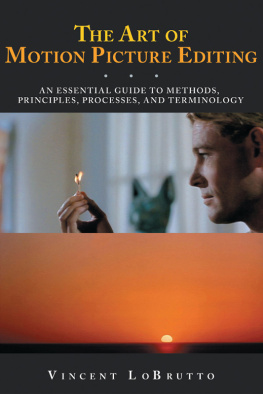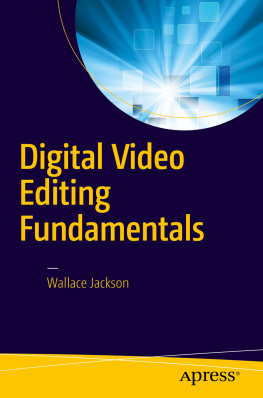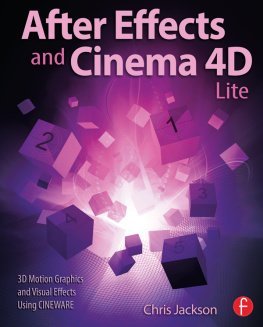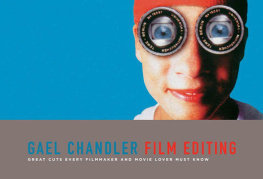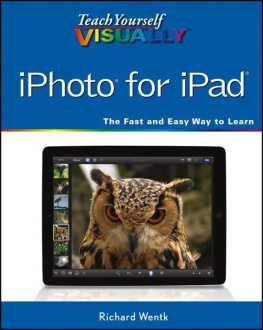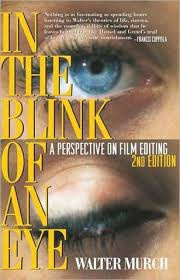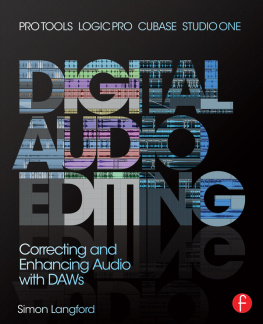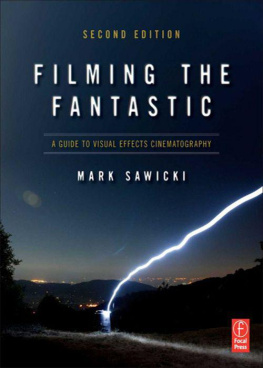EDITING AND SPECIAL/VISUAL EFFECTS

BEHIND THE SILVER SCREEN
BEHIND THE SILVER SCREEN
When we take a larger view of a films life from development through exhibition, we find a variety of artists, technicians, and craftspeople in front of and behind the camera. Writers write. Actors, who are costumed and made-up, speak the words and perform the actions described in the script. Art directors and set designers develop the look of the film. The cinematographer decides upon a lighting scheme. Dialogue, sound effects, and music are recorded, mixed, and edited by sound engineers. The images, final sound mix, and special visual effects are assembled by editors to form a final cut. Moviemaking is the product of the efforts of these men and women, yet few film histories focus much on their labor.
Behind the Silver Screen calls attention to the work of filmmaking. When complete, the series will comprise ten volumes, one each on ten significant tasks in front of or behind the camera, on the set or in the postproduction studio. The goal is to examine closely the various collaborative aspects of film production, one at a time and one per volume, and then to offer a chronology that allows the editors and contributors to explore the changes in each of these endeavors during six eras in film history: the silent screen (18951927), classical Hollywood (19281946), postwar Hollywood (19471967), the Auteur Renaissance (19681980), the New Hollywood (19811999), and the Modern Entertainment Marketplace (2000present). Behind the Silver Screen promises a look at who does what in the making of a movie; it promises a history of filmmaking, not just a history of films.
Jon Lewis, Series Editor
1. ACTING (Claudia Springer and Julie Levinson, eds.)
2. ANIMATION (Scott Curtis, ed.)
3. CINEMATOGRAPHY (Patrick Keating, ed.)
4. COSTUME, MAKEUP, AND HAIR (Adrienne McLean, ed.)
5. DIRECTING (Virginia Wright Wexman, ed.)
6. EDITING AND SPECIAL/VISUAL EFFECTS (Charlie Keil and Kristen Whissel, eds.)
7. PRODUCING (Jon Lewis, ed.)
8. SCREENWRITING (Andrew Horton and Julian Hoxter, eds.)
9. ART DIRECTION AND PRODUCTION DESIGN (Lucy Fischer, ed.)
10. SOUND: DIALOGUE, MUSIC, AND EFFECTS (Kathryn Kalinak, ed.)
EDITING AND SPECIAL/VISUAL EFFECTS
Edited by Charlie Keil and Kristen Whissel

New Brunswick, New Jersey
Library of Congress Cataloging-in-Publication Data
Names: Keil, Charlie. | Whissel, Kristen, 1969 editor.
Title: Editing and special/visual effects / edited by Charlie Keil and Kristen Whissel.
Description: New Brunswick, New Jersey : Rutgers University Press, 2016. | Series: Behind the silver screen ; 6 | Includes bibliographical references and index.
Identifiers: LCCN 2015041069 (print) | LCCN 2015046275 (ebook) | ISBN 9780813570822 (hardback) | ISBN 9780813570815 (pbk.) | ISBN 9780813570839 (e-book (Web PDF)) | ISBN 9780813573571 (e-book (ePub))
Subjects: LCSH: Motion picturesEditing. | CinematographySpecial effects. | BISAC: PERFORMING ARTS / Film & Video / Direction & Production. | PHOTOGRAPHY / Techniques / Cinematography & Videography. | SOCIAL SCIENCE / Media Studies. | PERFORMING ARTS / Film & Video / History & Criticism.
Classification: LCC TR899 .E325 2016 (print) | LCC TR899 (ebook) | DDC 777/.55dc23
LC record available at http://lccn.loc.gov/2015041069
AA British Cataloging-in-Publication record for this book is available from the British Library.
This collection copyright 2016 by Rutgers, The State University
Individual chapters copyright 2016 in the names of their authors
All rights reserved
No part of this book may be reproduced or utilized in any form or by any means, electronic or mechanical, or by any information storage and retrieval system, without written permission from the publisher. Please contact Rutgers University Press, 106 Somerset Street, New Brunswick, NJ 08901. The only exception to this prohibition is fair use as defined by U.S. copyright law.
Visit our website: http://rutgerspress.rutgers.edu
Manufactured in the United States of America
CONTENTS
Charlie Keil and Kristen Whissel
Scott Higgins
Dan North
Paul Monticone
Ariel Rogers
Dana Polan
Julie Turnock
Benjamin Wright
Julie Turnock
Deron Overpeck
Lisa Purse
Meraj Dhir
Tanine Allison
EDITING AND SPECIAL/VISUAL EFFECTS
Charlie Keil and Kristen Whissel
Both editing and special/visual effects have typically belonged to the province of postproduction, but their respective roles within the American filmmaking process have differed dramatically. While editing has often strived to hide itself, functioning as a craft designed to foster continuity and reinforce the effect of seamlessness that has long been the hallmark of Hollywood filmmaking, special/visual effects have more readily lent themselves to the realm of the extraordinary and the spectacular. Even so, special/visual effects have been devised to produce a broad range of images and aesthetics, from the fantastical to the convincingly (photo)realistic. This volume focuses on the various special/visual effects artists and houses, processes, technologies, practices, and aesthetics that comprise the long and varied history of special/visual effects in the American cinema. At the same time, it offers a parallel examination of the manner in which editing has become integrated into Hollywoods moviemaking methods, giving equal attention to how editing has shaped the style of American films. To be sure, one can find numerous instances throughout film history when editing and special/visual effects have been mutually supportivefrom the stop-motion substitution used in The Execution of Mary, Queen of Scots (1895), where a well-placed cut creates the illusion of the monarchs beheading, to the combination of digital visual effects and concealed edits that produces the impression of an uninterrupted and often hallucinogenic long take in Birdman (Alejandro G. Irittu, 2014). So while the increased departmentalization of labor involved in studio manufacture might have kept crafts distinct, and technology often distinguished the realm of visual manipulation from that of shot combination, editing and special/visual effects have shared the broad aim of transforming cinematic imagery throughout their history, even as each has been shaped in different ways by a broad range of influences. Operating in concert or singularly, editing and special/visual effects have emphatically transformed the American cinema, a rich and varied process of transformation that this volume traces in all its intricacies.
Editing
It is a truism of Hollywood cinema that style exists largely to go unnoticed. No aspect of style embodies that principle more consistently than editing, so much so that a common term for describing the system of cutting synonymous with best practices is invisible editing. A history of editing in the American cinema must take into account how such an approach to piecing shots together took root in the first decades of the mediums existence, and how it became the linchpin of the classical style that dominated the studio era. Overviews of subsequent decades would devote equal attention to the challenges posed to so-called continuity editing, detailing how alternative approaches rendered the work of editors more noticeable. But studying editing as an important aspect of cinematic style only tells part of the story: we can also understand editing as a craft practice performed by trained and talented individuals invested in seeing their presence within the industry and contributions to the filmmaking process properly recognized. And while editing as a process may not seem as dependent on sophisticated equipment as the work of a cinematographer or sound technician, technology has also played an important role in both the workflow of the editor and the aesthetic effects of the editors labor. Accordingly, this introduction takes into account technologys effect on editing, editing as a craft practice, and editings relation to film style, reflecting the emphases evident in the volumes chapters. Weaving together some of the insights and observations of the chapters authorsScott Higgins, Paul Monticone, Dana Polan, Benjamin Wright, Deron Overpeck, and Meraj Dhircan produce an initial portrait of editing as an integral part of Hollywoods moviemaking methods, a portrait extended and deepened by the full accounts provided in their chapters.
Next page


